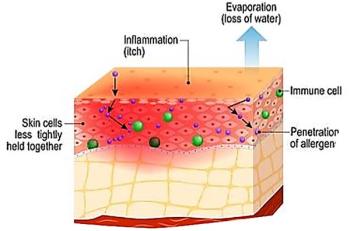
AAAAI: Asthmatic City Kids Often Don't Get Allergy Testing or Education
SAN DIEGO -- City-dwelling children with asthma may miss out on allergy screening or education about avoidance of household allergens, reported New York investigators.
SAN DIEGO, Feb. 26 -- City-dwelling children with asthma frequently miss out on allergy screening or education about avoidance of household allergens, reported New York investigators.
In a study of more than 5,200 children in New York, less than half of those with a diagnosis of asthma and current symptoms had been screened for allergies, reported Jeanette Stingone, M.P.H., and Luz Claudio, Ph.D., of the Mount Sinai School of Medicine, at the of the American College of Asthma, Allergy and Immunology meeting here.
And even among children who got allergy testing, about 40% were never told how to reduce allergen exposures at home, despite the fact that half were on allergy medications, said Stingone, a research coordinator in community and preventive medicine.
"The majority of asthmatics have some sort of allergic component to their disease, and treating allergies and teaching people how to reduce or eliminate their exposure to whatever they're sensitized to is a large part of asthma treatment for those who have allergic asthma," she noted.
Yet in their population, there was wide racial and socioeconomic disparity in clinical practices regarding allergy screening and treatment for children with asthma, she reported.
The investigators conducted a cross sectional study of children enrolled in one of 26 randomly selected New York elementary public schools. Parents of the children were sent a questionnaire asking about sociodemographics, health insurance coverage, asthma diagnosis, allergy diagnosis and testing, use of medical resources, medications, and the presence of environmental triggers.
More than three-fourths of the potential sample (76.9%) returned the questionnaires, for a total of 5,250 responses. There were no statistically significant differences between their sample and the general New York City school population, Stingone noted. Approximately 98% of the children studied where in the five- to 12-year-old range.
The authors found that the prevalence of asthma in the group was 13.0%, ranging from 6% in areas where asthma hospitalization rates were low, to 27% where asthma hospitalization rates were high.
Of those with current asthma, less than half (47.3%) had received a diagnosis of allergies from their physicians -- a figure that's quite low, Stingone said. According to the AAAAI, more than 70% of people with asthma also have allergies.
White children, those from upper-income households, and those who completed their questionnaires in English were the most likely to have received a concurrent allergy diagnosis. Conversely, Latino and African-American children were 40% less likely than white children to receive a diagnosis of allergies.
Among the children with asthma and a diagnosis of allergies, only 54% reported being tested for specific allergen sensitivities.
"Allergy testing is a critical component in the treatment of children with allergic asthma, because how else are they going to know what triggers to avoid?," noted Philip Landrigan, M.D., chairman of community and preventive medicine at Mount Sinai.
When the investigators conducted an analysis controlling for sociodemographic factors, they found that children who were on Medicaid were only half as likely as others to get allergy testing (odds ratio, 0.502) and children on New York State supplemental insurance (i.e., not Medicaid eligible because of income levels, but still eligible for assistance) were less than one-third as likely as others to get tested for allergens (odds ratio.0.306).
Yet both Medicaid and New York State supplemental insurance plans state that they reimburse for allergy testing, Stingone noted.
The investigators also found that two of five children who tested positive for allergies were never given instruction on the specifics of allergen avoidance, such as removing pets from the home for children allergic to animals, or removing stuffed animals from bedrooms of children who are sensitive to dust mites -- even though 102 of these patients were on allergy medications.
"However, allergy testing did have its positives," Stingone said. "They were statistically more likely to have education on exposures than people who had allergies but didn't have allergy testing, and the children who had allergies and didn't have allergy testing were much more likely to only be on allergy medication, and not to have received that education."
Children with allergies who weren't tested were also less likely to report the presence in the environment of possible triggers, such as cats, carpeting, and mold.
"What our findings illustrate is that many urban children are not receiving comprehensive asthma treatment that include management of allergies and associated illnesses," Stingone said. "And what we found is that minority children and children on public health insurance, or low-income children, seem to be most affected by these disparities in care."
"We hope to encourage more training and awareness of asthma guidelines, not just for providers but also for patients, on the fact that this is a key part of their management," she continued. "If they can prevent illness in their upper airway, they can really prevent symptoms in their lower airways."
Newsletter
Enhance your clinical practice with the Patient Care newsletter, offering the latest evidence-based guidelines, diagnostic insights, and treatment strategies for primary care physicians.




























































































































































































































































































